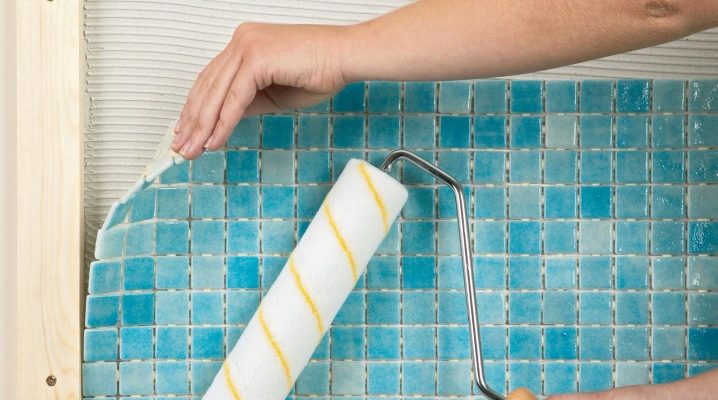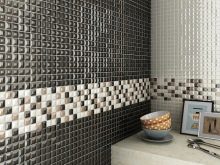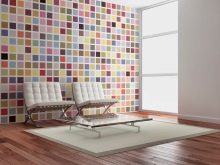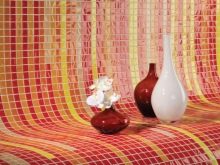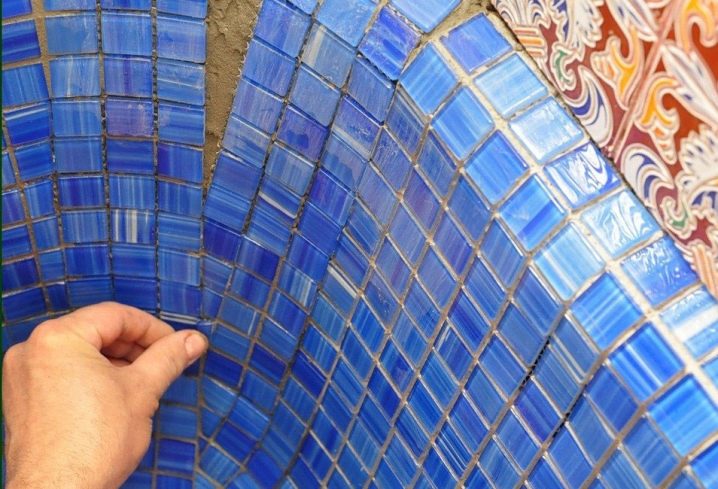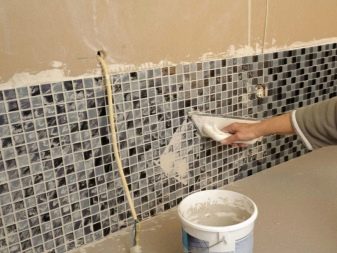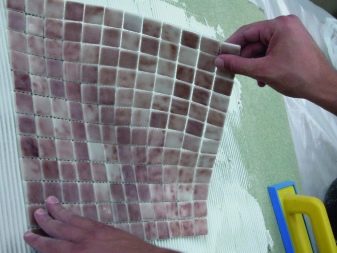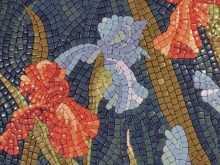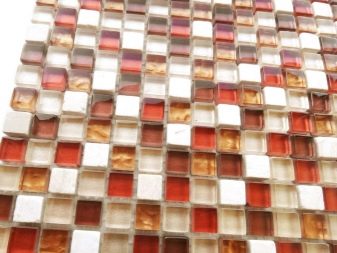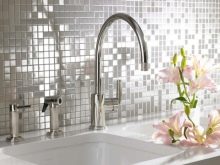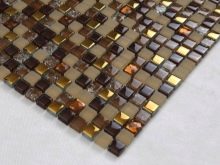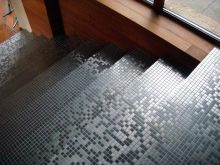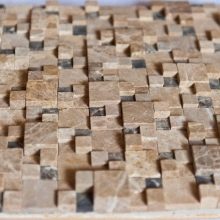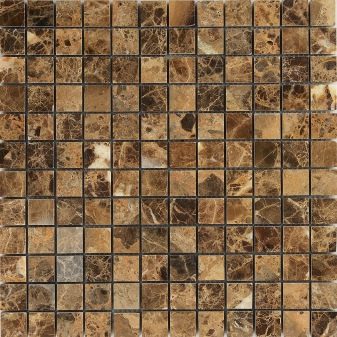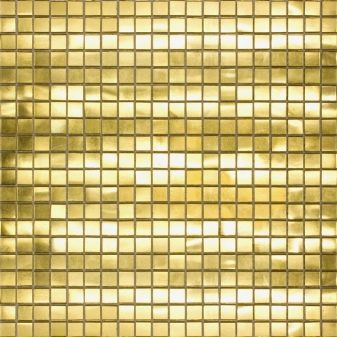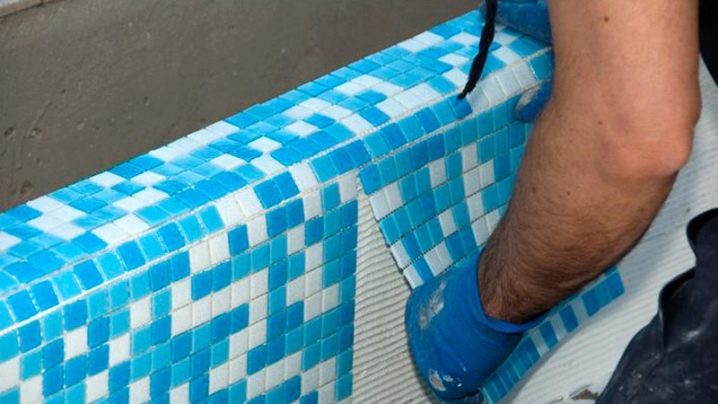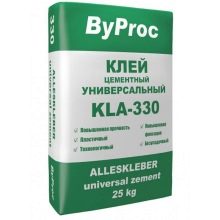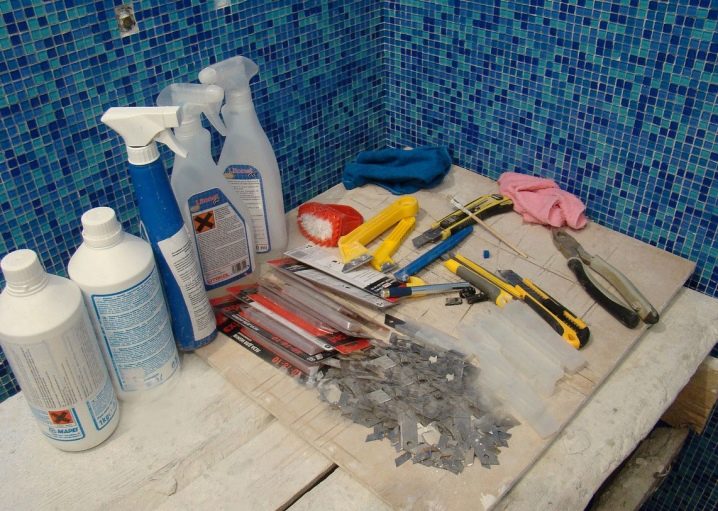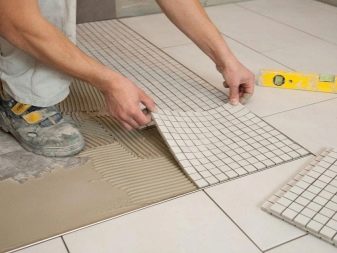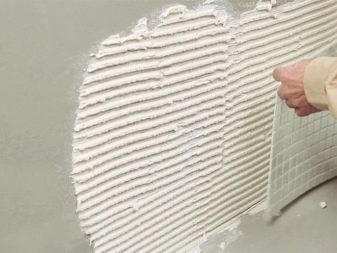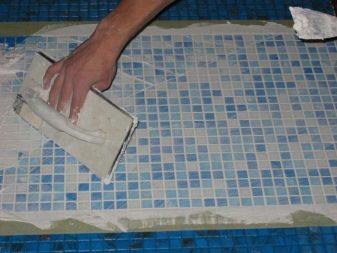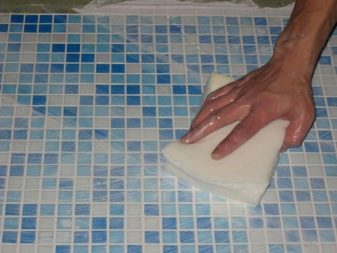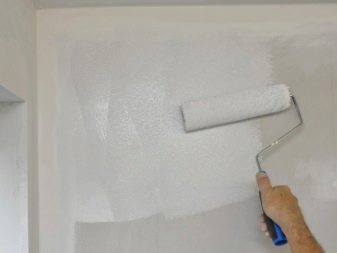Mosaic on glue: types and features of laying
Finishing work - the final stage of repair and aesthetic renovation of the room. Manufacturers of building materials offer a huge range of their products and new solutions in the decoration of any space. One of the options for the decor room - mosaic. The mosaic composition is a vivid artistic plot, laid out from a large number of small details. The variety of material used in this type of work will surprise the most demanding customers and will provide an opportunity to implement all the projects planned.
Special features
Mosaic is a miniature ceramic tile, consisting of individual elements of size 1 to 1 cm.
The equal distance between the details will allow you to create the illusion of the integrity of the picture and incredibly beautiful colors.
Creating a surface with increased strength, reliability, high performance characteristics allowed the mosaic to take a leading position in the ranking of sales of finishing materials and become an indispensable material in the design of the bathroom, pool and kitchen. A wide range of colors with elements of blotches and stains, the ability to create relief surfaces and effects of aging, the combined use of materials of different types and textures - all this makes the mosaic a unique and indispensable tool in the hands of professional designers and novice designers.
Manufacturers presented the masters of modern mosaic on a polymer mesh or silicone. The connection of small rectangular segments into the reservoir of the required size made it possible to create mosaic walls without painstaking work with each fragment of the pattern.
Working with a mosaic on the grid not only increased the speed of finishing, but also increased the bonding of the tile to the working surface.
Given the characteristics of this type of finishing material, it is possible to start work only under certain conditions:
- a smooth work surface - mashing with plaster or mounting the base from plasterboard will help to avoid irregularities and level drops of the mosaic coating;
- lack of dust and other pollution on the wall basis;
- surface treatment with primers with high penetration properties.
Mosaic fabric has several differences from ceramic tiles:
- the simplicity of cutting mosaic compositions allows you to use it in areas of complex terrain;
- the ability to create unique elements of the decor on the mirrors and frames;
- regular cleaning of dirt will keep the original look and increase the service life of the tile surface;
- the ability to order a mosaic of the desired size.
Mosaic types
Modern technologies allow the use of elements of different shapes, sizes, colors and materials in one layer.
Manufacturers produce several types of mosaic:
- background - there is no pattern or pattern (various shapes, sizes and colors of elements reinforce the effect of the visual distance of the surface when finishing small areas);
- in the form of a panel - an image of color plots using elements of the same shape and size;
- Mixes - an arbitrary combination of multi-colored tiles in a single design solution.
Properties, appearance and characteristics of mosaic compositions depend on the material used and can be classified.
They are of several types:
- Glass. Universal material for background use, and for compositions in the form of panels. Glass mass is characterized by durability, moisture resistance, heat resistance and high strength. A wide range of colors, the ability to use pigments and paints, the play of light on the glass surface make the material aesthetic and attractive when designing the bathroom, pool and facade of the building.
- Smalt They are created on the basis of glass with the addition of potassium salts, have an opaque saturated structure, retain all the properties of a glass mosaic. Resistance to wear and destruction of the surface makes it possible to apply them in common areas, hallways and on stairs.
- Mirror. An unusual version of glass mosaic, consisting of smooth elements of different colors and shapes that can reflect light and objects. Compositions from this material can only be background, have a fragile structure,in rooms with high humidity get a dull shade and unaesthetic appearance.
- Ceramic. They have the properties and characteristics of tiles, but differ in the small size of the elements. A wide range of colors, patterns, reliefs and inclusions on the surface, different forms and methods of production, high strength and resistance to wear make it possible to apply the composition for facing the kitchen, pool, buildings and fireplaces.
- Metallic. Modern and stylish facing elements with a high price. Rubber-based mosaic modules consist of 5 mm thick chips made of stainless steel and aluminum. They have a matte or polished surface of segments coated with brass, bronze, gold and silver; they are used for lining mirrors, furniture, photo frames and kitchen aprons.
- Wood. Spectacular and original elements of the decor in the style of "rustic". The manufacture of hardwood chips increases the strength and durability of the product.
- Stone An interesting option for creating decorative panels and exclusive patterns. Using modules of different shapes and stones of different rocks,designers have the opportunity to get a wide range of colors and a wide range of colors to fulfill all customer requirements.
- Porcelain tiles. Inexpensive replacement of natural stone. A strong, reliable and durable material with an opaque or glossy surface of different shapes and colors is used for interior and exterior use. Environmental safety, resistance to aggressive environment, temperature and moisture, low price - the indisputable advantages of the material.
- Marble. Mixture of marble chips and concrete. It is applied to street facing in a tough climate.
- Golden. Exclusive look with platinum, silver and gold plating. The high price and technology of manual production of finishing material is a sign of luxury and uniqueness of decorative elements.
On the shelves of hardware stores you can find other types of mosaics, the use of which is less common in decorating the room.
Glue selection
An important step in the mosaic installation process is the choice of adhesive. It is on the quality, properties and characteristics of the adhesive that the reliability and durability of the gluing of the elements to the working surface depend.The main parameters when choosing - elasticity and wettability. The color of the composition is not important if the mosaic elements are opaque or opaque; in other cases, white tile glue is recommended.
The main criteria when choosing an adhesive are the type of material and the operating conditions of mosaic compositions.
Specialists and manufacturers recommend several types of adhesive:
- Cement (homemade). It consists of white or gray cement, water, sand, fine fraction, modifying additives. There are several types of such glue: hard, elastic and highly elastic.
- Dispersive. Ready glue for small amounts of work, preserving its properties after opening the container.
- Reactive. Consists of epoxy and polyurethane base and hardener. Before using the adhesive components must be mixed to obtain a chemical reaction. It has a high price and short terms of use before hardening.
Mounting technology
The high cost of finishing work with this material may unpleasantly surprise when calculating the estimated cost. With the presence of elementary tools, cladding work can be performed independently.
To perform them you will need:
- building level;
- roulette;
- soft matter;
- rubber mallet;
- double-sided spatula;
- paint brush;
- construction knife
For fast and high-quality work, it is necessary to comply with the technological process and the experience of specialists:
- on the leveled and primed surface it is necessary to apply the planned layout of the composition;
- evenly distribute the glue on the wall base;
- to glue the sheets plastered with adhesive from the reverse side according to the marked contours (the distance between the sheets should correspond to the gaps between the small tiles, smear the surface very carefully, try not to smear the front side of the tile);
- to press the laid design with the rubber roller;
- remove the excess glue with a soft sponge and leave to dry for 2 days;
- the final stage is to grout the joints with a suitable grouting compound (liquid glass, epoxy resin and latex based compositions are used);
- after 20 minutes in a circular motion to wipe the surface, removing all excess composition and contamination.
Before starting work on decorating a window sill or floor with a mosaic, it is necessary to stick sheets of plywood, chipboard or drywall on the work surface, which will provide surface insulation.
Priming mixtures will not only reduce the consumption of adhesive, but also protect the surface from moisture and moisture penetration.
Care Tips
Qualitative work on laying the mosaic covering is a guarantee of coziness and comfort in the house. To preserve the original appearance, properties, aesthetic characteristics and reliable fixation of tile coating It is necessary to know all the details of the care of mosaic compositions:
- use only detergents without abrasive components for cleaning;
- use only soft sponges and warm water to remove dirt, wipe the surface dry;
- not to apply oil substances, wax and products with acid;
- high-quality ventilation system will avoid the appearance of mold, mildew and cloudiness of the tile;
- apply antifungal agents on the seams.
To learn how to properly lay mosaic tiles, see the following video.
